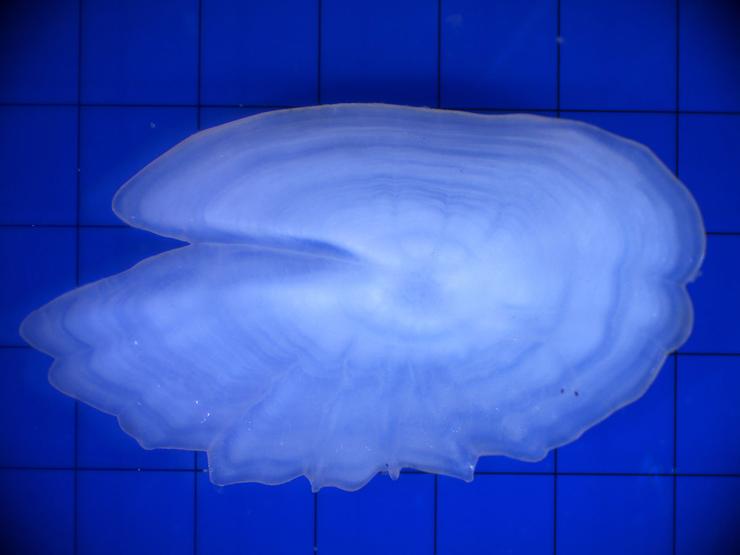Student Spotlight: Angela Klemmedson
Marine Science Graduate Student has her research featured as photo of the week on Howard Hughes Medical Institute website.

Angela Klemmedson studies lanternfish. Lanternfish inhabit the mesopelagic layer of the world’s oceans (200–1000 meters deep). This region is sometimes called the twilight zone. Gymnoscopelus nicholsi is found in the waters around Antarctica and can grow up to 16 cm in length. These fish make daily vertical migrations in the water column; during the night swimming more closely to the surface where food is abundant and predators are less threatening, and retreating to the relative safety of the twilight zone during the day.
Fishes have three pairs of calcified structures called otoliths within their inner ears, and these “ear bones” play an important role in the sensation of motion and gravity. Otoliths are made up of calcium carbonate and a protein matrix, which are deposited in layers throughout the lives of the fish. Seasonal variation in growth creates a pattern of bands that can be counted and measured to estimate the age and growth rate of each fish—similar to counting tree rings. Information derived from observing the growth and form of otoliths is useful for understanding fish population dynamics and estimating the effects of environmental conditions, including climate change.
Click here to read the full article on the Howard Hughes Medical Institute website.



